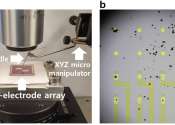Cracking in lithium-ion batteries speeds up electric vehicle charging, study finds
Rather than being solely detrimental, cracks in the positive electrode of lithium-ion batteries reduce battery charge time, research done at the University of Michigan shows.
Aug 1, 2023
0
73









